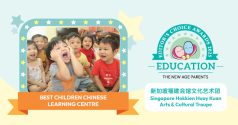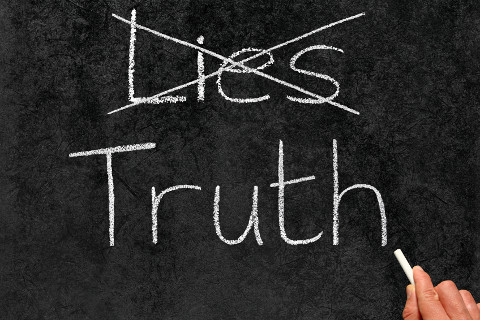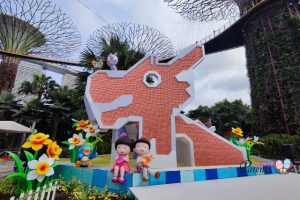Ms Areena Loo is the Founding Director of Bridge Learning, Singapore’s Leading Early Intervention Institution. Prior to the compelling call to Bridge Learning, she was with the Ministry of Education (MOE) in Singapore as a qualified schoolteacher, a certified Teacher Counsellor and a trained Learning Support Coordinator.

We sat down to ask her more about her center and views on early intervention and learning disability.
In your definition, what is early intervention?
Early intervention is a specialised support system with a series of programmes and services targeted to help children bridge the gaps or delays in their developmental milestones, adaptive lifeskills, learning, social-communication, behavioural or/and emotional needs.
Occupational, physio and speech therapies are some forms but not the only types of intervention available. There are other types of psycho-educational intervention especially needed for high functioning children and/or with mild learning difficulties/disabilities as therapies alone are insufficient or unnecessary for them. For moderate to severe cases of Learning Disabilities, generally one or more forms of therapies is required.
Bridge Learning provides early intervention for both learning difficulties (lds) and Learning Disabilities (LDs). Can you explain the differences between learning difficulties (lds) and learning disabilities (LDS)?

How do you diagnose and assess whether a child has lds and LDs?
At Bridge, Diagnostic Assessments (DA) are reliable tools used to identify a child’s strengths and weaknesses that affect learning and performance (without the stigma of Psychological Assessment), target the learning areas in need and monitor the progress and development. Some areas of learning skills will be assessed more in-depth, dependent on the child’s needs.
DA is likening to a trip to the doctor for a health check-up and receiving immediate help if required. It is like what Chinese proverbs describe, “Effective remedy happens when we examine the root of the problem and act accordingly”. Bridge Learning’s Diagnostic Assessment (DA) is likening to a personalised health check-up for learning and development. Our unique child-centric assessment is based on our exclusive non-categorical and interdisciplinary methodology.

What normally happens during a Diagnostic Assessment (DA)?
DA is the time whereby an individual child attempts a series of stress-free and enjoyable activities and games with Bridge Specialist. The child will be assessed on his/her range of learning skills and developmental levels such as reading age, comprehension age, spelling age, receptive and expressive language, auditory and visual memory, fine and gross motor skills, attention span, maturity of social skills, spatial and numeracy concepts.
The DA is followed by immediate consultation with the Bridge Specialist to provide feedback and recommendation(s) to parents on the observations made and scores obtained. Every child will have an Individualised Developmental and Progress Profiling (IDPP) at Bridge.
We systematically identify a child’s strengths and weaknesses that affect learning and performance, target learning needs, and monitor progress and development. Learning skills assessed may include auditory and visual memory, motor skills, attention span, reading and comprehension age, receptive and expressive languages, social maturity, visual spatial, conceptual development, thinking skills etc..
How important is it for all children with lds and LDs receive early intervention?
A child with learning difficulties may or may not need early intervention while one with Learning Disability must receive it. The earlier they receive quality intervention, the better is their progress.
You determine when your child needs early intervention when it is obvious:
- difficulties or delays in developmental milestones, adaptive lifeskills, learning, behaviour, emotional or/and social-communication.
- typical tuition and enrichment do not help much or at all.
- the child’s learning and life functions are hindered.
What is the difference between the traditional Label-Focused (Categorical) approach and Needs/Abilities-Focused (Non-Categorical)?
Traditionally, children are categorically diagnosed and given intervention according to prescribed labels eg: Asperger Syndrome, Attention Deficit (Hyperactivity) Disorder (ADD/ADHD), Dyslexia, Auditory Processing Disorder (APD). Intervention could happen only when a label is used as entry requirement.
Non-Categorical is an interdisciplinary approach that understands the labels but tears down the divides that separate the labels and look across laterally at the child’s needs. Intervention help can be given regardless if a child can be formally diagnosed with a label. While labels are useful in enabling us to know the specific characteristics under each category, it may make diagnosis inefficient and intervention ineffective.
Categorical approach may miss out other vital needs and difficulties about a child outside of the label. Also, if a child does not meet the criteria under the label, the child cannot be formally diagnosed. Worst of all, the child won’t receive the help needed targeted at the root issues.
There is a misconception that most children can be formally diagnosed and classified under a label. Some may not be severe enough to be formally diagnosed or labelled under the DSM IV criteria. The truth is that majority of the children are hybrid cases and cannot be formally diagnosed. Meaning most children may show a couple of symptoms under a label and another few characteristics under another category, making Non-Categorical approach highly useful and effective.
Bridge Learning uses the Non-Categorical approach in our Diagnostic Assessment and also intervention programmes. It is more child-centred, looking at the needs and abilities of the child instead of label-focused whereby it is trying to fit a child into a specific label. It takes greater expertise and experience to be able to know how to execute both approaches.
An analogy is that you keep treating your neck because it gives you pain. The root cause is actually your lower back when you found an expert who go beyond looking at just your neck!

What other methods are helpful in helping these children cope with learning?
Strong and sound pedagogies such as Jean Piaget’s concrete learning for better abstract understanding, Vygostsky’s proximal zone of learning, multi-sensorial experiential learning and making learning meaningful and fun, are trustworthy. There is no one method that works with every child no matter of how expensive, “branded” or good marketing it is. Sometimes the most effective learning strategies doesn’t even have a name to it but has loads of common sense in them. However, we don’t recommend flashcards for children under age of 2 though as it may cause some language learning difficulties later on.
What can parents do to help their children?
- Parents should do self care by taking time out just for yourself. Do not have self-belief that by being 24 hours involving yourself with your children or being overprotective means you are a good parent. Often, it has adverse effects in stifling the children’s healthy development and straining the marriage.
- Establish explicit and clear boundaries, expectations and consequences like for any other children. Make sure you deliver what you say. If you can’t, don’t verbalise it.
- Don’t neglect your spouse & the siblings of the child with lds/LD.
- Ensure there is consistency in the parenting style between you and your spourse. One parent being passively lenient and another being overly strict is not beneficial for any kind of children.
How can parents and teachers of these children work together to help improve the child’s condition?
Parents need to learn to let go and trust. You maybe the people whom love your child the most but you may not necessarily be the best persons to help them in their intervention. We all need others to help us help our children develop and reach their potential.
Teachers need to get training to empower yourselves with the knowledge and skills to handle such children. As long as you believe the child can be helped, it can be done. It all starts with our attitude in mind. Remember why you answer the call to teaching, it was not because you want the kids to get As, it’s because you believe you can impact and shape their lives.
For both parents and teachers, try to master this art mixed with science; know in your heart that the child has different needs but know in your mind to treat him/her as you would like other children. The more you normalise the child through the way you treat him, the easier for the child to assimilate and grow with his peers. Never over-compensate out of guilt, sympathy or misguided theories.
What is one thing people should know about children with lds and LDs?
They are normal kids who have average to high cognitive abilities and the majority of them (with mild lds & LDs) are in mainstream schools, not special schools.
By Ms Areena Loo.
A celebrated Social Entrepreneur, Areena’s burning passion is to create wealth through honourable and profitable businesses so as to reach out to the needy, abused, oppressed children, orphans and street-kids. She envisioned them being educated and growing up to become strategic marketplace leaders with great influence for societies. She has also recently been honoured as a Young Global Leader and became the first speaker to bring awareness and education of children with Learning Disabilities to the world leaders and governments at the prestigious World Economic Forum (WEF).
For more information, visit here.
* * * * *
Looking to reach over 100,000 parents in Singapore? Let us amplify your message! Drop your contact details here, and we’ll reach out to you.
Discover exciting family-friendly events and places to explore! Join our Telegram channel for curated parenting recommendations.


























































